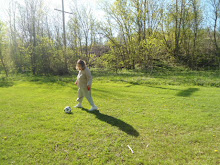The question I get asked most often by writers is whether she should use a dash or an ellipse. This is also something that I often see misused in fiction—sometimes even in published fiction. Once it is explained, you’ll find it a relatively simple concept.
The Dash
The dash is a very useful tool when writing fiction. It can replace commas, parenthesis or a colon and is more informal in its usage. The dash can be written as two hyphens in a row--like this or as an em dash—like this. Your word processor might convert the two hyphens to the em dash automatically as you type. There are no spaces before or after the dash.
A dash can show a shift in thought or to set off an important element in a sentence.
Example:
She laughed—a knowing sound—and leaned back in her chair.
For the most part I’m happy with it—or at least I was.
You can also use a dash in place of a colon to make the text less formal.
Example:
He liked to play instruments—guitar, violin, piano, and trumpet.
A dash can be used in place of parentheses.
The whole class—about thirty students—received brand new instruments.
The dash is a very useful tool in your writing, but should be used sparingly. It draws the eye and thus emphasizes a phrase in a statement. But if there’s a dash in every sentence, then it loses its effect.
Ellipses
I often see ellipses misused in fiction—sometimes even in published fiction. The ellipse does not show a break in thought. It is used to show a thought that trails off and is left unfinished.
Example:
I remember that day back in May… Well, it isn’t really important.
There are no spaces before the ellipse. You leave a space after the ellipse when it begins a new sentence.
The other use for the ellipse is in quoting from something and you only want to use part of the source. If you leave out something in the middle, you use the ellipse to show that something has been left out.
Example:
“To be, or not to be: that is the question … Be all my sins remember’d.”
Ellipses are rarely used in fiction. If your character’s words trail off as he notices the tornado heading straight for him, then you’ll need to use an ellipse. It is a useful tool when used sparingly.
Okay, grammar lesson is over. Back to work…

